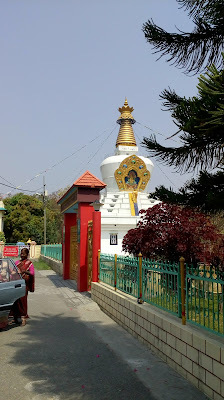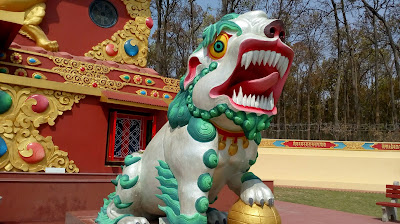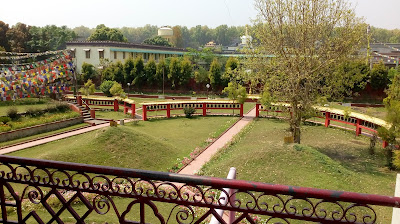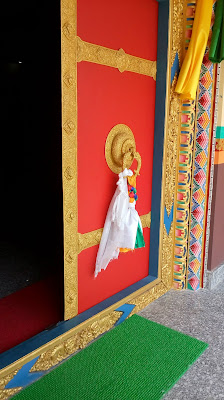Facts about Buddha Temple
Buddha temple also known as Mindrolling monastery, built in 1965 is a Tibetan Monastery by Kochen Rinpoche and a few other monks, created for the promotion and protection of the Buddhist culture.
The temple complex was made in the "Name" style (as per the Tibetan religion school ) and built in the Japanese style...
 |
| Main Entrance of Buddha temple |
As can be seen, many Buddhist temples are located near forests, hills or remote areas because it has been known that the hills and the forests are associated with positive and spiritual vibrations, even the monks in the earlier time were persecuted by people hence the forest gave them safety. While the temples are often in the middle of towns in China, Japan and Thailand.
 | |
| The centrepiece of the temple |
Stupas symbolize the Universe concept of the Buddhist tradition. The dome of the stupa stands upon a square or circular base, the square base represents the earth, representing the dome-shaped sky joining the world mountain which enters the dome to form a balcony at the peak of the hill. There is a pole at the centre of the dome that signifies the axis of the earth.
It is considered that the shapes of Stupas may have been got inspired by the staff and the begging bowl used by Buddha during his wandering.
 |
| Small Stupas on the right side of the main temple |
The main temple or stupa has some small stupas also known as "Eight Great Stupas". They gave information about the 8 main events of the Lord Buddha.
- The Lotus Blossom Stupa symbolizes the birth of Siddhartha later known as Buddha. The step on this stupa are round and decorated with lotus petals.
- The Enlightenment Stupa symbolizes the stage when Siddhartha achieved Enlightenment. The steps here are rectangular and undecorated.
- The Stupa of the turning wheel of Dharma symbolizes when Buddha began to turn the Dharma wheel and starts giving initiation to people. The steps are adorned with doorways i.e. opening the doors of Dharma.
- The Great Miracle Stupa symbolizes the event when the Buddha got challenged at Shravasti to demonstrate his realization. Here each step has four directions having a central extension.
- The Stupa of Descent from the Tushita heaven symbolizes the event when Buddha came back from the celestial realm to continue his teaching. Actually the mother of Buddha i.e. Mayadevi, get reborn in the celestial realm called Tushita heaven, Buddha spent three months there teaching her the path to enlightenment to repay her kindness. Each side of this stupa has a staircase on four steps.
- The Stupa of Reconciliation symbolizes the reuniting of the monastic followers of Buddha after the disagreement. the steps of this stupa are octagonal in shape
- The All Victorious Stupa symbolizes the event when Buddha extends his life by pleading with one of his disciples. The steps of this stupa are round
- The Parinirvana Stupa symbolizes the true peace to Buddha which is beyond death. There are no steps at this stupa
 |
| A Tibetan Lion |
 |
| The grassy portion behind the Great Buddha Statue |
The temple usually contains many Buddha Statues. The main or the central statue of the Buddha is getting surrounded by the Offerings like incense sticks, fruits and flowers. Some of the contain ashes or bones of a noble holy man.
The temple has usually get directed towards facing to south or sometimes east, but it never faced towards north or east as they were regarded as Unlucky directions according to Chinese Feng Shui
 |
| Amazing woodwork was done by the artists on the temple entrance door |
 |
| Small Dragon craved on the temple gate |
A Buddhist temple is also called a " Vihara ". It has also a school, here you find a shrine room with a large Buddha statue and the statue of his disciples. We also find some relics and manuscripts as well as a meditation room, a lecture room and a library.
 |
| The Holy mantra of the Tibetan Tradition Written on the walls is " Om Mani Padme Hum " |
The walls of the temple are also get decorated with beautiful paintings inside the chamber the temples which describe life, his teachings and the miracles done by the Lord Buddha, adding another amazing feature to the temple and giving a peaceful soothe to the worshipers who came theirs for worship.
2 comments:
Amazing
Its my pleasure di
Post a Comment